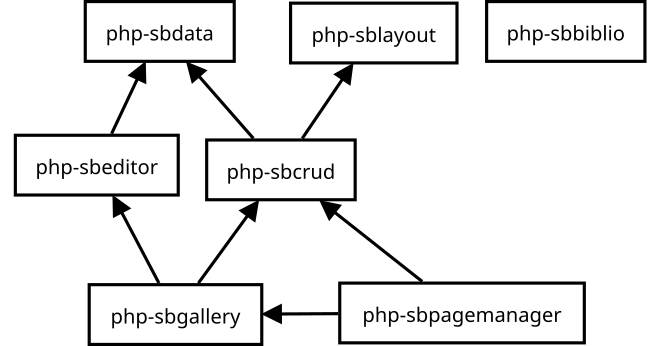Web framework

Between 2002 and 2009 I have been actively developing my own custom PHP-based web framework. It consists of the following sub packages:
- php-sbdata. This package can be used to validate data fields and present data fields. It can also manage collections of data fields as forms and tables. Originally this package was only used for presentation, but based on my experience with WebDSL I have also integrated validation.
- php-sbeditor. This package provides an HTML editor implementation that can be embedded into a web page. It can also optionally integrate with the data framework to expose a field as an HTML editor. When JavaScript is unsupported or disabled, it will fall back to a text area in which the user can directly edit HTML.
- php-sblayout. This package provides a layout manager that can be used to manage common sections, the menu structure and dynamic sections of a page. In addition to a PHP package, I also created a Java Servlet/JSP implementation of the same concepts.
- php-sbcrud is my partial solution to the page-screen mismatch problem and combines the concepts of the data management and layout management packages.
Using the CRUD manager, every data element and data collection has its own URL, such as http://localhost/index.php/books to display a collection of books and http://localhost/index.php/books/1 to display an individual book. By default, data is displayed in view mode. Modifications can be made by appending GET parameters to the URL, such as: http://localhost/index.php/books/1?__operation=remove_book. - php-sbgallery provides an embeddable gallery sub application that can be embedded in various ways -- directly in a page, as a collection of sub pages via the layout manager, in an HTML editor, and as a page manager allowing you to expose albums of the gallery as sub pages in a web application.
- php-sbpagemanager extends the layout manager with the ability to dynamically manage pages. The page manager can be used to allow end-users to manage the page structure and contents of a web application. It also embeds a picture gallery so that users can manage the images to be displayed.
- php-sbbiblio is a library I created to display my bibliography on my personal homepage while I was doing my PhD research.
For nowadays' standards the features provided by the above package are considered to be old fashioned. Still, I am particularly proud of the following quality properties (some people may consider them anti-features these days):
- Being as declarative as possible. This means that the usage of JavaScript is minimized and non essential. Although it may not efficiently deal with the page-screen mismatch because of this deliberate choice, it does provide other benefits. For example, the system is still usable when JavaScript has been disabled and even works in text-oriented browsers.
- Small page sizes. The layout manager allows you to conveniently separate common aspects from page-specific aspects, including external stylesheets and scripts. As a result, the size of the rendered pages are relatively small (in particular compared to many modern web sites), making page loading times fast.
- Very thin data layer. The data manager basically works with primitive values, associative arrays and PDO. It has no strong ties to any database model or an Object-Relational-Mapper (ORM). Although this may be inconvenient from a productivity point of view, the little overhead ensures that your application is fast.
The above listed packages can be obtained from my GitHub page and used under the terms and conditions of the Apache Software License version 2.0.

